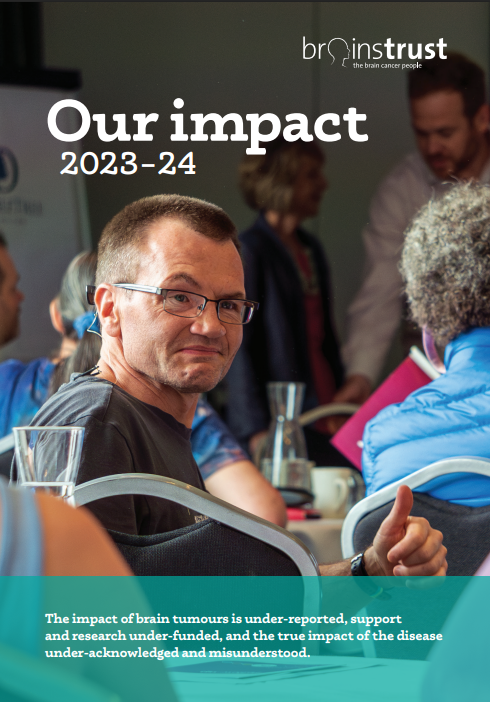New standards on the treatment of brain tumours and the quality of care for patients will be issued today, when the National Institute for Clinical Excellence (NICE) publishes its revised brain tumour guidelines for health and social care professionals.
It is the first time these have been updated since they were published in 2006.
In the last 12 years, developments in research into the different types of brain tumour have shown that early biopsy and diagnosis can result in more appropriate treatment for patients. This is reflected in the updated guidelines.
NICE (National Institute for Health and Care Excellence) guidelines are evidence-based recommendations for health and care in England. They set out the care and services suitable for most people with a specific condition or need, and people in particular circumstances or settings.
brainstrust has been instrumental in developing the new guidelines, as one of the key stakeholders involved in the consultation process. We are publishing eight new guides for patients, carers and clinicians to reflect the changes to the NICE guidelines.

Updated guides to brain tumour treatment and care launched today to reflect new NICE guidance
Helen Bulbeck, director of services and policy here at brainstrust, says: ‘In recent months there has been a great deal of focus on funding research into brain tumours and we welcome any investment which could one day put a stop to this horrendous disease.’
‘However, every year more than 10,000 people are diagnosed with a brain tumour. At brainstrust we understand the effect of a diagnosis on a person and their family and we are relentless in our pursuit of better quality of care, better communication, and ultimately helping people to live with this diagnosis to the best of their ability.’
She adds: ‘We welcome this update of the NICE guidelines and have produced a number of our own guides to reflect these changes, which will be available to patients, carers and clinicians. Decisions about treatment and care are best made together and these guides will enable everyone to have informed discussions about the choices that they face.’
Production of the eight new brainstrust guides to accompany this change to the NICE guidelines, has been made possible thanks to a donation from the Horrell family of Huntingdon. They set up the Anna Horrell Fund when Anna, a wife and mother, was diagnosed with a glioblastoma.
The Anna Horrell Fund supports brainstrust’s information production, so that Anna’s legacy can benefit the thousands of people who are living with a brain tumour.









